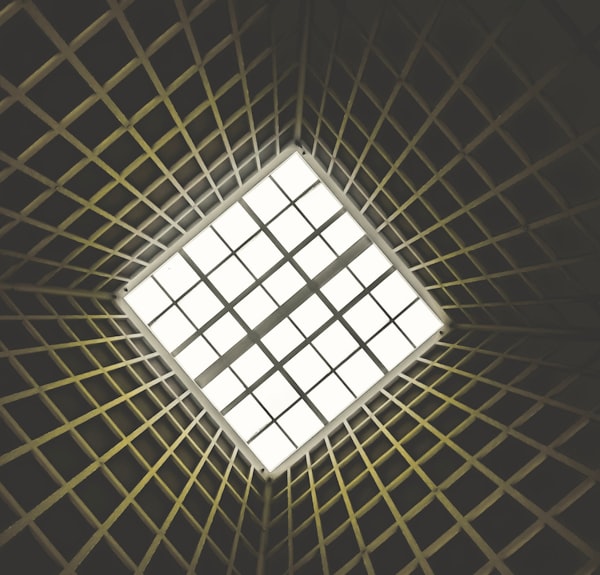Film Discussion 16: 2001: A Space Odyssey
As always, a great film and a great discussion! Thanks to everyone who came today and wrestled with an admittedly confusing, but awe-inspiring film. I've loved talking about these Kubrick films, and like Eric said, he really is a genius!
Below you can find some more links of great articles and resources on this film. A big shout out to James Kang over at Critics Round Up for gathering some great links on the film! If you haven't checked out his site yet, you really need to, he's doing some great work pointing to worthy film dialogue and criticism.
Show Notes
1. "Hearing and Seeing '2001: A Space Odyssey' Anew" by Richard Brody
There [the ape’s murder] is where Kubrick becomes Kubrickian, with the idea that the mark of humanity is not in mere technology but in the weapon, and in the will to use it.
2. Interiors (06/12) 2001: A Space Odyssey (1968) by Mehruss Jon Ahl & Armen Karoghlanian
The appearance of the monolith is representative of the next stage in evolution. These monoliths provide guidance with evolutionary progression. The few apes that begin using tools move onto the next stage of evolution, while the others face extinction. This evolutionary leap is symbolized in a match cut as an ape throws a bone into the open air. Stanley Kubrick cuts from the image of the bone in the air onto a floating spaceship in space and effectively jumps forward four million years in a single second. This progression of time is later paralleled in the closing scene of the film.The second appearance of a monolith comes during the time when humanity is once again on the verge of an evolutionary breakthrough. The next logical step in evolution for the human race at this point in time is their race to the stars. This evolutionary leap is represented through HAL 9000, a computer aboard their spaceship, which is arguably more advanced than the humans. HAL eventually becomes a threat to the safety of the humans and we are provided with an interesting paradox. The tools that once aided us in our progression forward are now limiting us. In other words, man has now lost control of technology, hence the need for our next step in evolution.
Dr. Dave Bowman, a scientist on the Discover One, is transported into another world or dimension after defeating HAL. In the end of his journey, Dave’s spaceship miraculously appears in an empty room with white walls. There is also an immediate feeling of distance in this room – from the outside world as well as from technology, in general.
3. "2001: A Space Odyssey - Discerning Themes through Score and Imagery" by James Maynard Gelinas
As Ligeti's music ends, the first image we see is a celestial alignment of the sun the earth and the moon as Richard Strauss' exhilarating Also Sprach Zarathustra begins. It's critical to note that Thus Spoke Zarathustra is also a novel by Friedrich Nietzsche. This musical choice thus signals that the film deals with the same central issues in this book.In that novel, man exists as a mid-way point between lower animals and the Übermensch, a fully self-actualized super man, the next level in human evolution. The Übermensch exerts his own superiority over others not just due to greater strength or superiority of intelligence, but because it is an eternal law of nature that the expression of power is itself righteous. In that expression, a triumph of will over adversity is achieved.
In the first sign that things might not be as normal as had been originally assumed, Heywood Floyd stops to make a video telephone call home. In the background, through a window, we see the earth careening around and around his head, spinning uncomfortably as if we were on an amusement park ride. There is no up or down. The spinning background performs two functions simultaneously, first it reinforces documentary realism; this is exactly how space scientists envision the creation of artificial gravity. But second, it also suggests a disquieting difference between the planetary environment where humanity had evolved, a place where the comfort of knowing up and down is clear, and this careening and confusing place, where we don't even know that the place we plant our feet is down and look up is above. It's the second indication that man's technology, like with nuclear weapons, had taken him to a place evolution had not intended.
HAL begs for his life, and the computer announces that he is afraid of what is to follow. Thus begging the question, how does a computer feel fear if it is not self-aware? By this dialog, Kubrick is reinforcing that the central question of HAL is not whether he can think, but whether he can feel. That question is now fully answered.
4. "2001: A Space Odyssey" by Roger Ebert
What he had actually done was make a philosophical statement about man's place in the universe, using images as those before him had used words, music or prayer. And he had made it in a way that invited us to contemplate it -- not to experience it vicariously as entertainment, as we might in a good conventional science-fiction film, but to stand outside it as a philosopher might, and think about it.




